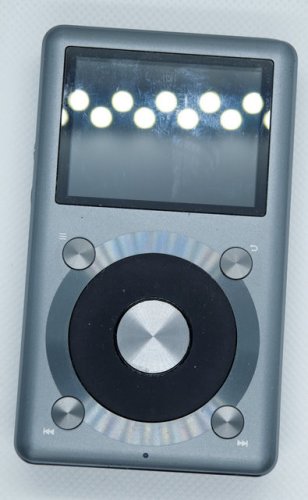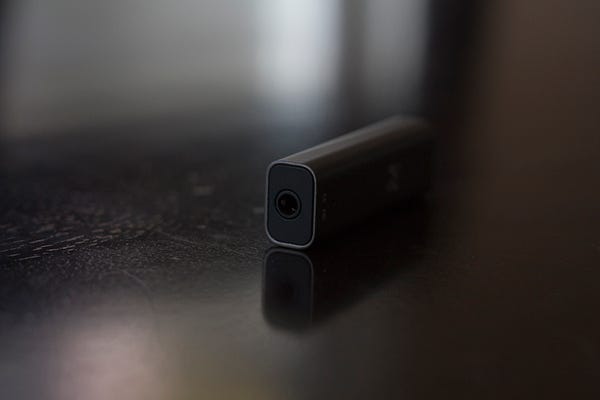Preamble:
Originally posted in English on my English and German audio review website, the "
Kopfhörer-Lounge", here comes my review of the Zorloo ZuperDAC-S, successor to the original ZuperDAC.
Introduction:
Zorloo is a Chinese audio company that started their business with the help of crowdfunding, introducing the “World’s First Digital In-Ears”, “
Z:ero”, and a DAC called “
ZuperDAC” in the past few years.
The original ZuperDAC was a small, portable USB DAC that worked rather well with sensitive headphones and in-ears. The overall package was quite good for the price, if you didn’t want ultimate output power for insensitive headphones, but it had one flaw for those who intended to use in-ears without a flat impedance response, such as most multi-BA in-ears, which would suffer from an altered tonality due to the effect of the original ZuperDAC’s ca. 7 Ohm output impedance, which is definitely somewhat too high for those particular in-ears (if you want to drive them without any tonal changes).
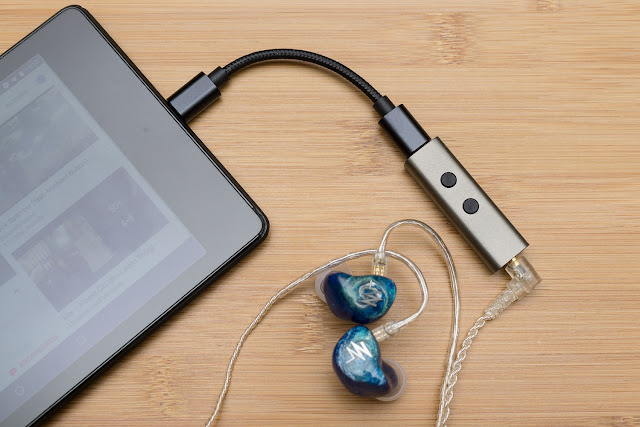
Fast forward, the ZuperDAC is getting a successor, the ZuperDAC-S. It’s not only smaller than the ZuperDAC and now features built-in volume control that works independently from the host device’s, but also allegedly has a reduced output impedance of below 2 Ohms that should make it much better suitable for most higher-end multi-BA in-ears. Its technical specifications have also somewhat improved on paper, just as its power output (that’ll probably still be a bit too low for more insensitive full-sized headphones if you listen rather loudly, but should drive the majority of portable headphones and in-ears to unhealthy loud levels).
I was asked if I wanted to test the new ZuperDAC-S before release. I accepted and was supplied with a free sample for my evaluation, without any other incentive or external influence on how my review would turn out, for good or ill.
So let’s check out how the new ZuperDAC-S performs, shall we?
Technical Specifications:
Price: regular retail price: $79; crowdfunding pre-order price: $45
DAC: ESS Sabre ES9018Q2C
Max. Resolution & Sampling Rate: 24 Bit, 192 kHz
Max. Output Power: 32 mW + 32 mW
Volume Control: integrated, 16 steps, works independently from host (last setting is stored)
SNR: 120 dB
THD: 0.0005%
Channel Separation: 76 dB
Output Impedance: < 2 Ohms
Delivery Content:
What you get, next to the DAC itself and a neat little manual, are three USB cables (micro USB, USB-C, USB-A).

While an Apple-specific cable doesn’t come included, the ZuperDAC-S, just like its predecessor, also works with Apple devices if Apple’s
Camera Connection Kit is used (this is not only stated in the manual but also something I can confirm myself).
Looks, Feels, Build Quality:
The ZuperDAC-S is fully made of black and gunmetal grey metal, which also includes the two volume buttons.
Build quality is nice and the design appears like a professional product, however I think it would be even nicer to have the volume buttons labelled (even though their layout is quite intuitive – the one closer to the headphone port is the “volume up” button), and I also think that an engraved or laser-etched Zorloo logo would look nice, too. [I was just informed that the production version of the metal housing will have Zorloo logos. Nice!]

The three cables have got woven insulation but are stiffer than what you would probably want for fully portable use. They’re easy to replace though since there is no permanently attached cable but a universally usable micro USB socket.
Since the two buttons have a rather low profile and a neither too weak nor too heavy actuation point, accidentally adjusting the volume is quite unlikely.
Ports, Buttons, Features:
Super easy and simple – two ports (micro USB and 3.5 mm) and two volume control buttons that work independently from the host’s volume control. And a blue power LED.

Android, iOS (with special cables or with the help of the
Camera Connection Kit), MacOS and Linux work driver-less with the ZuperDAC-S while one has to manually download and install the drivers in order to get the small DAC to work with a Windows computer. It is an easy process though.
When in use, the ZuperDAC-S will warm up a bit, but never reaches temperatures close to be considered “hot”.
Volume Control:
One of the biggest differences compared to the
original ZuperDAC is that the ZuperDAC-S now features volume control buttons, something its predecessor obviously didn’t have.
Volume is controlled digitally, so there is no channel imbalance even at low settings, and there are 16 steps in total. The last volume setting isn’t only stored and remembered after plugging the ZuperDAC-S into another device, but the volume control works also independently from the host, which means that you can use the DAC’s volume control if your host doesn’t allow any volume adjustment, or if the host’s volume control isn’t as precise as you would like to, with a too large gap between two settings.
For this I really applaud Zorloo – volume control is super precise with Android devices as a result (, albeit not exactly with a Windows source where you cannot use the built-in Windows volume but have to use the ZuperDAC-S’s 16 built-in volume steps).
Sound:
Frequency Response:
One of the most basic and fundamental things an audio device should have is a flat unloaded frequency response in the important range of 20 to 20000 Hz. While it is anything but sorcery to achieve this in modern days, some (however mainly inexpensive and rather no-name) audio devices still fail to achieve this basic thing.
Let’s see how the Zorloo performs in this regard:

As it could be expected, the raw and unloaded frequency response is perfectly flat and therefore just the way it should be.
Output Impedance:
Even when having a flat frequency response without load or with a simple load (such as a headphone that has got the same impedance over its entire frequency response), things are getting much more difficult with most multi-driver in-ears that have got more than just one driver and a crossover circuit that causes the in-ears’ resistance to vary along with their frequency response.
If the audio device’s headphone output doesn’t have a low output impedance, the in-ears’ frequency response and therefore heard tonality will be skewed and they will (depending on the device’s output impedance and the in-ears’ specific impedance response) sound more or less different than when driven by an audio player that has got a low output impedance. To maintain an unaltered sound even with low impedance multi-driver in-ears, it is therefore best to have an audio player that has got an output impedance of ideally less than 1 Ohm.
Zorloo states an output impedance of less than 2 Ohms, which might already lead to some slight and already audible frequency response changes with really diva-like in-ears, but should be still fine for most multi-BA in-ears.
This is what the ZuperDAC-S puts out when connecting a critical, low impedance multi-driver in-ear to its single-ended output:

The connected load was my
Ultimate Ears Triple.Fi 10, an in-ear that is among the most source-picky species of its kind and changes its sound quite rapidly as the player’s output impedance rises.
The measured deviation in combination with the Zorloo indicates an output impedance of ca. 1.6 Ohms, which backs up Zorloo’s own specs.
While very low sensitive multi-BA IEMs with a high impedance swing, such as the
Triple.Fi 10,
Campfire Audio Andromeda or
Shure SE846 might want an even lower output impedance for no audible frequency response changes at all, most multi-BA in-ears will have no audible or only a very small tonality change. In this regard, the ZuperDAC-S outperforms most smartphones by a good bit, with only few models having an even lower output impedance.
Hiss:
I consider myself as someone who is rather sensitive to hearing hiss and have also got some very sensitive in-ears (for example the
Shure SE846 and
Ostry KC06A that are among the most hiss-revealing models on the market). So with the right in-ear, I hear hiss to a varying degree with about any digital device (in fact out of the devices I have and have heard, only the
iBasso DX90,
Cowon Plenue 2,
Leckerton Audio UHA-6S.MKII,
Luxury & Precision L3 and
Luxury & Precision L3 Pro are basically
really hiss-free, with some other devices such as the
iBasso DX200 or
Cowon Plenue M2 or
Plenue D coming very close).
Using the Zorloo with my
Shure SE846,
Pai Audio MR3 and the
Ostry KC06A, I can report that I am delighted. Very delighted actually, since even with those ultra-hiss-revealing in-ears, there is no audible hiss coming from the ZuperDAC-S, no matter what volume setting is chosen. This is pure excellence, something very desirable and something only
very little devices achieve, such as the Cowon Plenue 2, iBasso DX90 and Leckerton UHA-6S.MKII. Splendid. Just splendid and something where the
vast majority of smartphones are
clearly inferior, even if the output power specs are comparable/close.
Sure, most people won’t be using the ZuperDAC-S with extremely sensitive in-ears, but those who do, like myself, or are planning it, will be very happy to hear that, this I guarantee.
Subjective perception of Transparency, Details and Soundstage:
Now to the rather subjective part of my review. My opinion and experience regarding the perceived “character” and “transparency” of source devices and amplifiers is this one: there can be an existing audible difference between various devices, but it should definitely not be overrated – simply because the basic character of a headphone won’t be completely changed (if the circuit follows a clean design philosophy and the output is load-stable), but sometimes rather slightly “shaped” and is usually very subtle in many cases and is (in most cases) just slightly present (if even there) and not “huge” or like “totally different classes” or “night and day”.
I am not a fan of exaggerations and hyperboles here because as long as the objectifyable parameters of an audio player are neutral and not too shabby (loaded frequency response, distortion, crosstalk, dynamic range, noise, …), the audible difference, if there is any, will be quite small at best if two devices are compared with proper volume matching that cannot be done by ear but only with instruments, since even small differences in loudness can be perceived as a technical advantage by our ear and brain.
A more detailed, German article written by me concerning the “audible difference between comparable audio devices, if there is any”, can be found here:
http://kopfhoerer-lounge.blogspot.de/2016/04/Eigenklang.html

So let’s go on with my subjective impressions and observations (for critical listening and listening in general, I mainly used my
Sennheiser IE 800,
InEar StageDiver SD-2 as well as the
Ostry KC06A,
Brainwavz B200 and
NocturnaL Audio Atlantis):
Truth to be told, the ZuperDAC-S sounds mostly similar to its predecessor to me, except for being fully hiss-free with super sensitive in-ears and except for having the lower and much more multi-BA in-ear-friendly output impedance. Therefore it won’t be much of a surprise if the following lines show some similarities to my
original ZuperDAC review, however with various additions:
I don’t want to rest for too long with the general sound description (as the differences are also very small when the levels are correctly adjusted):
The ZuperDAC-S’s sound is what I’d consider as being precise, clean, with high speed and a slightly more analytical approach of neutrality while measuring tonally flat anyway.
Like with many Sabre implementations, so I would say, sound tends to be a little “crisp”, as in that the treble appears “very fast” and clean, and at least for the high frequencies, the ZuperDAC-S’s implementation is among the subjectively perceived “quickest” I have encountered so far regardless of price.
Transparency with sensitive and well-resolving in-ears is good but won’t reach the summit – but there is no big difference/gap. No, this isn’t because the Zorloo is vastly superior to many other devices or because devices with excellent precision-measured specs are in fact not all that good, but instead it’s because modern audio implementations are just no sorcery anymore and even inexpensive devices usually feature a nicely clean and transparent implementation (
with only few exceptions).
A mini-weakness of the ZuperDAC-S is that its bass doesn’t appear as tight as some other devices’ when using in-ears, something that I have sometimes observed with some audio devices as well. Again, it’s a quite small, rather tiny, difference, but present with sensitive in-ears.
To my ears, the soundstage is averagely wide and deep, and doesn’t show any signs of imprecision.
Definitely no night-and-day differences in general overall, but rather nuances (, which is just what one should and would expect), more objectively regarded – saying anything else would be quite foolish. Still, properly volume-matched by meters, the Zorloo has got a slightly different, “faster” appearing treble character than various other devices.
Generally those differences are by the way more apparent with sensitive and well-resolving in-ears and mostly indistinguishable even with
very good full-sized headphones.
Let’s continue with quick comparisons to two other Sabre-based DACs, namely the
HiFime 9018d as well as
LH Labs Geek Out IEM 100.
The ZuperDAC’s perceived transparency with detailed in-ears is not really worse, but the Geek Out has got an edge over the Zorloo using sensitive in-ears with high detail retrieval even though the ZuperDAC-S has got that “faster” appearing treble. Just as expected, there is no difference though when using full-sized headphones or less sensitive and less well resolving in-ears. Given that the differences are rather nuances, which is
totally normal (and even has to be that way) for well-constructed audio devices, this isn’t all that much of a surprise.
The Geek Out’s bass output appears slightly tighter.
Some words about hiss: with extremely sensitive in-ears, there is some (but still rather gentle) hiss with the Geek Out while the ZuperDAC-S is entirely hiss-free.
Regarding sonic qualities, both the ZuperDAC as well as HiFime 9018d are very close, but both are slightly different in their presentation.
Both soundstages are about similarly “precise”, though the HiFime generates the somewhat wider appearing stage while perceived spatial depth is similar.
Here again, the ZuperDAC-S’s treble stands out in appearing “faster”, whereas the HiFime outputs the slightly tighter lows in comparison when using sensitive in-ears.
Transparency using sensitive and well-resolving in-ears is pretty much similar.
While the 9018d outputs strong levels of hiss into very sensitive in-ears, the ZuperDAC-S remains hiss-free. The HiFime has got the advantage of many more built-in volume steps though.
Conclusion:
If you’re in need of a small, very portable USB DAC below $100 with built-in and host-independent volume control, truly excellent hiss performance even with extremely sensitive in-ear monitors, which is a very rare thing to find, and a still rather low/reasonable output impedance that is around 1.6 Ohms and still good for most multi-BA in-ear monitors with a non-linear impedance response, Zorloo’s ZuperDAC-S seems like a really good choice.

As the Italian music formation Mo-Do sang in German language in the 1990s, I conclude my review by saying that the ZuperDAC-S is “
Super Gut” (“Super Good”).
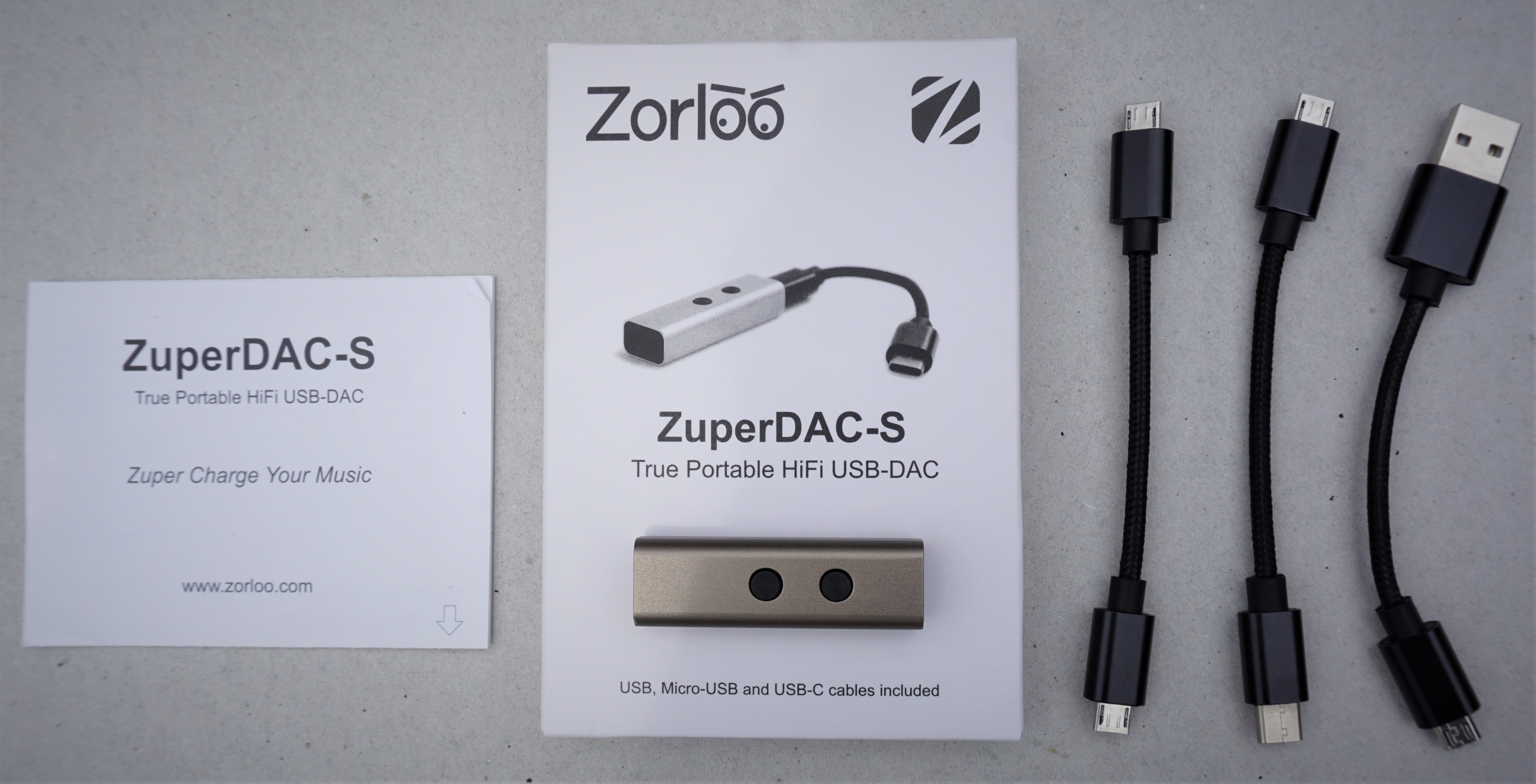














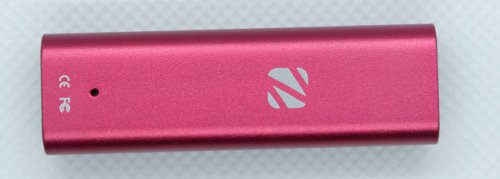


 .
.




